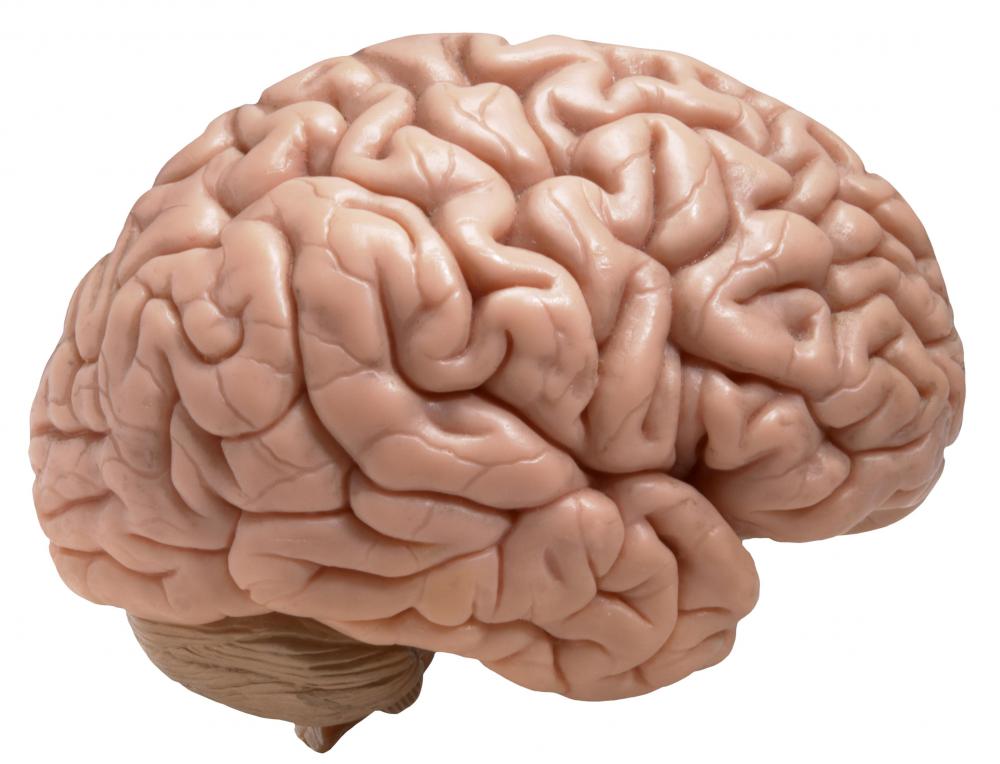At WiseGEEK, we're committed to delivering accurate, trustworthy information. Our expert-authored content is rigorously fact-checked and sourced from credible authorities. Discover how we uphold the highest standards in providing you with reliable knowledge.
What are Nicotine Receptors?
Nicotine receptors, more properly known as nicotinic acetylcholine receptors, are located in the brain and are made to accept acetylcholine, the most common neurotransmitter in the human body. Acetylcholine affects heart rate, breathing, and indirectly affects mood, memory, and appetite. Nicotine is an addictive substance in cigarette smoke whose molecules are small enough to cross the blood-brain barrier and attach to nicotine receptors in the brain, causing many of the same effects of acetylcholine and stimulating the production of dopamine, a chemical that creates feelings of pleasure. It is believed that the release of dopamine by stimulated nicotine receptors is responsible for the addictive effects of cigarette smoking and tobacco use.
Exposure to nicotine causes nicotine receptors to activate in a similar way to exposure to acetylcholine, but the effects last longer. Stress further intensifies the pleasurable effect and increases the likelihood of nicotine addiction. After repeated exposure to nicotine in cigarette smoke, more nicotine receptors appear in the brain. The body craves more nicotine to experience the same surge of dopamine. This addictive effect may begin within two days of the first cigarette.

Withdrawal from cigarettes causes mood changes, difficulty sleeping, and concentration problems. These symptoms may appear within several hours of the last cigarette and last for more than a month after stopping. If a smoker can abstain from smoking this long, the number of nicotine receptors will eventually return to normal levels and physically based cravings for cigarettes will nearly disappear.

Research into how nicotine receptors work has led to the development of products that can stimulate the effects of nicotine on receptors and reduce cravings to help smokers stop the smoking habit. The nicotine patch is applied to the skin and delivers nicotine transdermally, or through the skin, to control cravings. Nicotine patches are available in various strengths or dosages so that dosage can be reduced over time.

Nicotine gum and nicotine lozenges are smoking cessation aids that are taken by mouth. Like the nicotine patch, nicotine gum and nicotine lozenges help conquer smoking cravings by supplying nicotine to the body. Both the gum and lozenges may help provide some of the oral gratification acquired through the smoking ritual and give added support during smoking withdrawal. As with the nicotine patch, smokers should gradually wean themselves from nicotine gums and lozenges over time.
It’s important to remember that smoking cessation aids alone will not break the addiction. Most of the work must be done by the smoker. Smoking cessation aids address only the physical cravings. There are also many psychological and ritual habits associated with smoking that need to be addressed simultaneously with the physical aspects of nicotine addiction in order to stop smoking successfully.
AS FEATURED ON:
AS FEATURED ON:













Discussion Comments
Nicotine gum is highly addictive too. And surely the drug is created in a flavorful package of gum to better facilitate addiction to the gum, as another way to make loads of money. I had quit cigarettes for some time and then when my friend was trying to quit, I picked up her nicotine gum and was quickly back into a nicotine addiction that lasted years. Chewing the gum, I spent more money than I did buying cigarettes! It is extremely expensive and very hard to quit. As difficult as as it was quitting cigarettes if not more difficult.
Post your comments